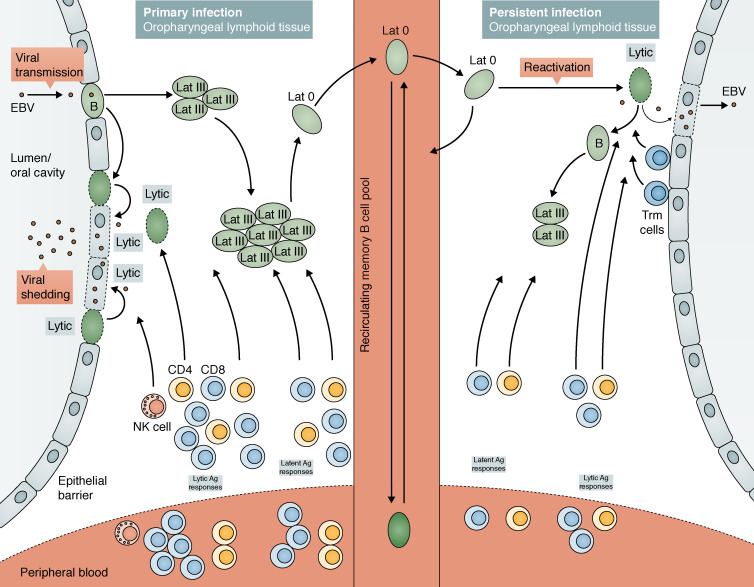Figure 1.
EBV infection and viral persistence in the tonsils of immunocompetent hosts. Early events of infection are poorly understood. However, there is accumulating evidence for a potential role for oral epithelial cells and/or infiltrating B cells. Orally transmitted virus is believed to establish lytic infection within the lymphoepithelium of the oropharynx, resulting in shedding of high levels of virus in the throat. Then, the virus switches to a growth-transforming latent infection (Lat III) of B cells within the local lymphoid tissues leading to proliferation of infected cells. However, viral persistence is largely achieved through the silent infection of memory B cells, where viral DNA is maintained in a circular form and no viral proteins are expressed. These virally infected memory B cells are believed to constantly recirculate between blood and oropharyngeal lymphoid tissues. Occasional reactivation of the virus within these lymphoid tissues may result in the production of new viral particles that could seed new foci of new infection of local B cells and also result in viral shedding from the throat. In immunocompetent hosts, tight immune control maintains virus during both lytic phase and latency. During primary infection as seen in IM, the vast array of antigenically rich EBV-lytic and -latent proteins induce priming and expansion of EBV-specific CD4+ and CD8+ T cells, as well as activation of NK cells. These effective immune responses bring the infection under control. Upon disease resolution, contraction of the T cell pool results in a small population of the memory T cell pool that persists both as tissue-resident memory cells (Trm cells) and circulating memory cells. Continuous immune surveillance by these resident and circulating memory cells is important for viral control. Black arrows denote movement of infected B cells.

